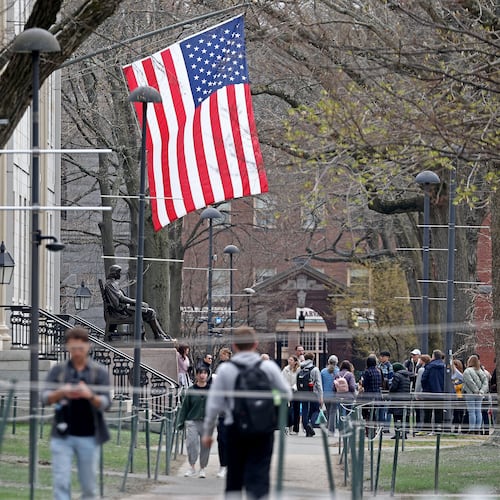As Maj. Gen. William T. Sherman’s armies prepared to leave Atlanta and embark on their march to Savannah in early November 1864, a Federal captain wrote of the efforts to extinguish anything of military value to the South. He especially observed Federal engineers “detailed to destroy the depots and public buildings in Atlanta.”
Moving toward the city, Sherman’s forces tore up the rails of the Western and Atlantic Railroad. Since Sherman planned to break from his supply line and live off the land, he no longer needed the rails.
Along the W&A from Dalton to Atlanta, today’s I-75 corridor, any structure deemed of military value received the torch — like a large part of Marietta’s square, which burned on Nov. 13. Coining a phrase that he would repeat during the advance on Savannah, Sherman — while watching the buildings of Marietta burn — told one of his aides, “I never ordered burning of any dwelling – didn’t order this, but can’t be helped. I say Jeff. Davis burnt them.”
The Nov. 14 demolition of the architectural pride of Atlanta – her railroad passenger depot, the “Car Shed” – marked one of the final acts before the blue-clad soldiers began filtering out of the city the following day. No one knew their exact destination save Sherman, and he would keep this information to himself for a while to keep Confederate officials guessing as to his actual target.
The Army of Tennessee under Gen. John Bell Hood was continuing its northward movement into the Volunteer State, leaving Maj. Gen. Joe Wheeler’s cavalry as the primary Confederate element in Georgia to impede the Northerners — about 3,000 mounted troopers to oppose a force of seasoned veterans some 62,000 strong.
The Federals moved forward in two wings. Maj. Gen. Henry Slocum led the left or northern route of the march. Maj. Gen. Oliver O. Howard commanded the right wing. Brig. Gen. Judson Kilpatrick’s cavalry would screen Howard during the initial stages of the campaign.
Macon seemed a logical first target, especially for Howard and Kilpatrick’s force, as the city hosted a Confederate armory, arsenal and laboratory and lay in the path of the advance. Confederate Maj. Gen. Howell Cobb commanded around 2,000 militia and home guard troops there. On Nov. 20, Kilpatrick’s troopers feinted toward Macon and skirmished with its defenders, but the blue coats veered off and rejoined the bulk of Howard’s force heading east.
The major engagement of the Savannah Campaign took place Nov. 22 at Griswoldville, where Brig. Gen. Pleasant Philips threw his 2,400 soldiers, mostly militia and local defense troops, against a fortified position of Brig. Gen. Charles Walcutt. When the smoke cleared, 650 Southerners — teenagers and old men — lay dead or wounded on the field.
Entering Milledgeville, the wartime capital of Georgia, also on Nov. 22, Federal troops in the left wing destroyed books in the state library and held a mock session of the Legislature.
Three days later, Confederate Lt. Gen. William Hardee arrived in Savannah and on Nov. 26 wrote to officials in Richmond of his belief that Savannah was Sherman’s target. As both Federal wings continued their thrust into the state, Confederate officials acted quickly to remove the Northern prisoners of war from Camp Lawton near Millen, and to relocate the irreplaceable equipment of the Powder Works out of Augusta.
Officials in Richmond also tried, as best they could, to send seasoned officers to Georgia in hopes their martial skills might somehow overcome Sherman’s forces. The South mustered plenty of chiefs but lacked enough soldiers to repulse the blue tide rolling across the state.
Sherman, equipped with a map of Georgia containing information from the 1860 Census on livestock and agricultural production from each county, knew the regions in his path had previously escaped the damages of war and could feed his army. The 2,520 wagons and 5,500 head of cattle in tow would provide rations once they arrived at Savannah; additionally, a Federal naval force awaited them offshore.
Wheeler and his horsemen constantly struck at Sherman’s troops in attempts to slow their progress and damage their supply wagons. A skirmish took place near Buck Head Creek northwest of Millen on Nov. 28, when Wheeler attacked and almost captured Kilpatrick. Wheeler suffered 600 casualties — men he could ill afford to lose — and reported, “We fought General Kilpatrick all night and all day, charging him at every opportunity.” Kilpatrick called the Southern attack “the most desperate cavalry charge I have ever witnessed.”
November ended with the two Federal wings combined. Sherman moved over to Howard’s force on Nov. 28 near Tennille, and from this point on in the campaign, the wings operated close to each other.
Meanwhile, on the final day of the month at Franklin, Tenn., Hood launched a frontal attack against strongly entrenched Federals; his army suffered tremendous casualties, including the loss of Maj. Gen. Pat Cleburne and five other general officers.
And while the guns blazed on the bloody fields of Franklin, an ancillary campaign to Sherman’s march ended at Honey Hill, S.C., where Col. Charles Colcock’s 1,400 Confederates repulsed 5,000 Federals sent to sever the Charleston and Savannah Railroad. Savannah maintained rail support from the north, but no one knew how much time would pass before any of this would really matter.
Michael K. Shaffer is a Civil War historian, author and lecturer. He can be contacted at: www.civilwarhistorian.net
For more on the Civil War in Georgia, follow the AJC: http://www.myajc.com/s/battleofatlanta/
About the Author
Keep Reading
The Latest
Featured


